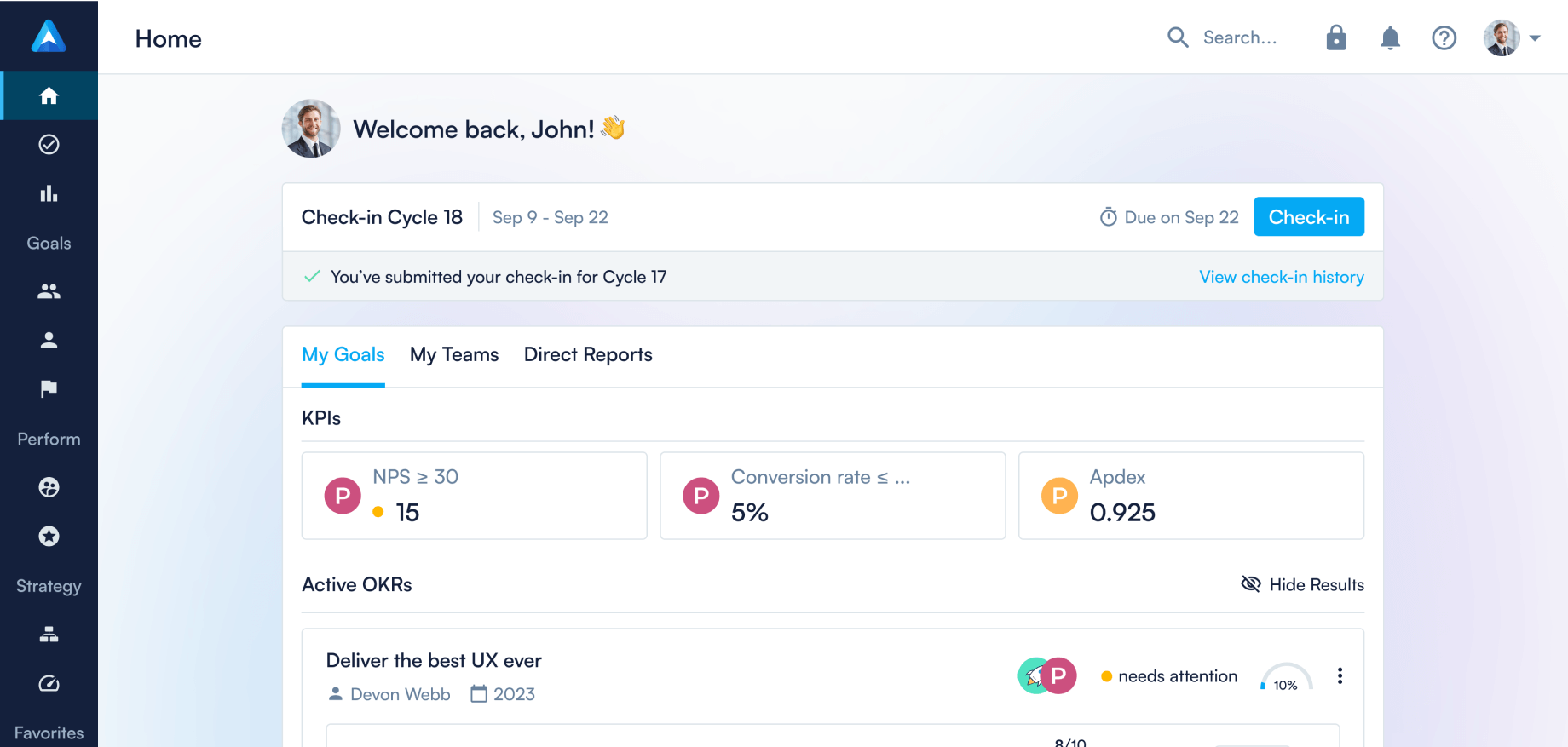
Company OKRs: how to collect your team's input

End of year might be a really busy period for you — or business may have already started to calm down. One way or the other, it’s important that you find yourself the time to pause and reflect, before you decide what’s next.
Leadership teams should use this time to tweak their strategy and set the company priorities for next year. Part of this exercise is closing your current (company) OKRs and reviewing your company KPIs. When this is done, ask yourself the following 3 questions:
- What went well in 2020? What didn’t go well?
Look at both OKRs and KPIs. - Is our strategy working out? Do we need to tweak it?
Update your strategic pillars before deciding on next year's company OKRs. - What are the 3 or 4 big Objectives that could have the biggest impact?
Will they help you double-down on your strategy?
When deciding what the company priorities for next year should be, I also recommend collecting input from your entire organization! In this article, I explain why and how.
Not collecting your team’s input would be foolish
Not only is OKR a great way to increase employee engagement. It is also a great tool to give every employee in your organization a voice. In the Industrial Age, a majority of employees were executing simple, repetitive tasks. The manager was considered the person best equipped to take all decisions. For most of today’s companies, this has become a counterproductive mindset.
We are only just starting to learn how to run creative firms where one of the key characteristics is that a lot of knowledge resides with the employees. Effective leaders use this knowledge to define their organization’s strategy, and so should you. It will lead to higher employee engagement and better strategic decisions, and you don’t want to miss this opportunity.
How to collect input for your Company OKRs
You will ultimately decide on 3 or 4 Company OKRs but you’ll get the best results if you ask employees only for one each. This way, everyone is forced to think about what they think is the top priority, and you can filter out the noise.
To add a quantitative component to the survey, employees should also pick the business areas they believe should be covered. One individual employee might not be able to decide which areas matter most. However, the collective intelligence from dozens, hundreds, or even thousands of employees won’t lie.
If you combine your own considerations with your employees’ qualitative and quantitative input, coming up with great Company OKRs for next year will be easier than you ever expected.
At Perdoo, we use a simple and free Google Form. In fact, we’ve just sent out this survey to our team:

I recommend every organization, regardless of size, to do the same. If you want to be sure your Company OKRs are well-written and set up correctly, check our eBook on How to write great OKRs.
FAQ
Continue reading...


Why you shouldn’t outsource OKR to HR


How to embed goals in performance reviews






